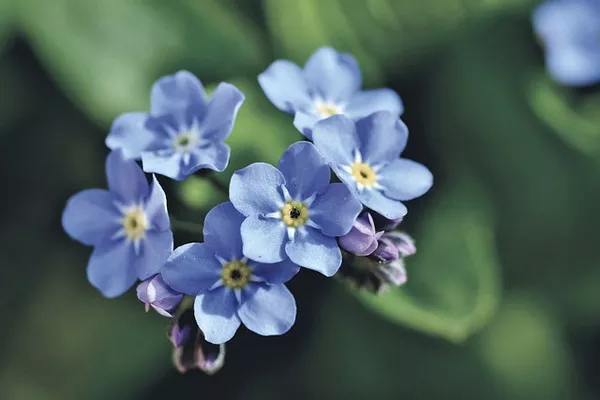Flowers, with their vibrant hues and enchanting fragrances, have long captivated the human imagination. From celebrations to expressions of love and sympathy, flowers play a significant role in our lives. However, have you ever wondered how long these delicate blooms can endure without the nourishing touch of water? In this article, we delve into the fascinating world of flowers and explore the factors influencing their longevity outside the comfort of a vase.
The Basics of Flower Longevity
Flowers are ephemeral beauties, and their lifespan is intricately tied to various factors, including the type of flower, environmental conditions, and the stage of bloom. Generally, flowers are composed of living cells that require water to maintain their turgidity – the rigidity or firmness of the plant cells. When flowers are cut from their parent plant, they lose their direct source of water and nutrients, initiating a process that eventually leads to their demise.
Understanding Transpiration
Transpiration is a crucial physiological process in plants, and it plays a significant role in the lifespan of cut flowers. It refers to the loss of water from the plant through evaporation, primarily from the leaves and flowers. When a flower is severed from its stem, transpiration continues, but without the continuous water supply from the roots, the rate of water loss accelerates. This dehydration process is a key determinant of how long a flower can last without water.
Factors Influencing Flower Longevity
Type of Flower:
Different flowers have varying levels of resilience to dehydration. Some flowers, like roses and carnations, can endure longer periods without water, while more delicate blooms, such as hydrangeas and lilies, may wilt more quickly. Understanding the specific needs of each flower type is crucial in preserving their freshness.
Environmental Conditions:
The surrounding environment significantly affects the longevity of cut flowers. High temperatures and low humidity levels expedite water loss through transpiration, leading to a shorter lifespan. Conversely, cooler temperatures and higher humidity can help slow down the dehydration process, prolonging the time a flower remains vibrant.
Stage of Bloom:
The stage at which a flower is cut also influences its endurance outside of water. Flowers in full bloom may have a shorter lifespan compared to those cut in the bud stage. Buds have less surface area for transpiration, and they may open up gradually, extending the overall freshness of the arrangement.
Proper Handling and Preparation:
The way flowers are handled and prepared after cutting can significantly impact their longevity. Clean, sharp shears should be used to make a diagonal cut at the end of each stem, promoting optimal water absorption. Removing excess foliage from the lower part of the stems also prevents bacterial growth in the water, enhancing the flower’s overall health.
How Long Can Flowers Last Without Water?
The longevity of flowers without water varies widely based on the factors mentioned above. Generally, cut flowers can last anywhere from a few hours to several days outside of water. Here’s a brief overview of the expected lifespan for some common flowers:
Roses: Roses are known for their resilience and can last anywhere from 4 to 12 hours without water, depending on environmental conditions and the stage of bloom.
Lilies: Lilies are more sensitive and may begin to wilt within 2 to 4 hours without water. Keeping them in a cool and humid environment can extend their freshness.
Carnations: Carnations have a relatively long vase life and can endure without water for 7 to 14 days. They are well-suited for arrangements that may not have immediate access to water.
Sunflowers: Sunflowers are robust and can last up to a week without water. However, their vase life can be extended with proper care and hydration.
Tulips: Tulips are known for their elegance but are more prone to wilting. Without water, tulips may last 2 to 5 days, making it essential to keep them hydrated.
Tips for Prolonging Flower Freshness
While flowers are destined to fade eventually, several tips can help maximize their lifespan outside of water:
Quick Placement in Water: Upon cutting, immerse the flowers in water as soon as possible. This helps prevent air bubbles from entering the stems, ensuring optimal water absorption.
Use of Floral Preservatives: Commercial floral preservatives contain ingredients that nourish the flowers and inhibit bacterial growth in the water. Using these additives can significantly extend the life of cut flowers.
Regular Water Changes: Changing the water in the vase every 2 days helps maintain a clean environment for the flowers. It prevents the buildup of bacteria, which can clog the stems and hinder water absorption.
Avoiding Direct Sunlight and Heat: Placing flowers in direct sunlight or near heat sources accelerates transpiration and dehydration. Opt for a cool and shaded location to preserve their freshness.
Hydrating Dry Stems: If you notice that the stems have become dry, recut them at an angle under running water to rehydrate the flowers effectively.
See Also: How Are Floral Arrangements Used In Christmas?
Conclusion
In the intricate dance between beauty and transience, flowers serve as fleeting ambassadors of nature’s elegance. Understanding the factors influencing their longevity outside of water empowers us to make informed choices when handling and enjoying these delicate blooms. While their time with us may be limited, the memories and emotions they evoke are timeless, reminding us of the transient yet profound beauty that surrounds us.


